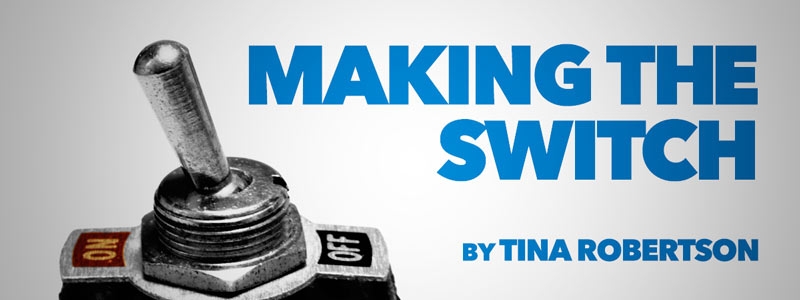The switch from public school to homeschool is daunting enough for a parent. However, helping a child to make a switch from public school to homeschool is equally challenging.
Dealing with the struggles of your child being in public school and then trying to not repeat those same mistakes at home, a parent feels at a slight disadvantage.
Other stress inducers like several children at home of different ages and needs, a hormonal teen, a husband’s hectic work schedule and maybe our own lack of organization in the mix and we may feel paralyzed.
It leaves us wondering if we possibly have any energy left over to help our child to make the transition to home peacefully.
3 Empowering Tips
The beginnings of homeschool should be worth remembering for the right reasons. It is a time to treasure being with our children as we now spend time with them day to day.
Look at these 3 tips that will empower you and more importantly help you to savor the time you now have with your children.
Communication is Conversation.
Though you may have been mulling over the decision to homeschool for quite a while, your child may not have had the same amount of time.
Like a relationship, where each person has different views on a decision, the decision to homeschool will have different vantage points for both you and your child.
It has been my experience that what you find important or as a priority in the beginning of homeschooling is not the same priorities that a child has.
Take time to allow your child to express his feelings, concerns, and fears about your new adventure, and you will get a glimpse into what you can do to quell his fears.
Depending on how long the child has attended public school, he may feel that he will not have any friends now that he is homeschooling. You may have every intention of being sure that you will meet his needs, but have you conveyed that to him?
Raising Independent Learners.
After communication, we want to encourage independence and individuality in our children’s education.
As parents not only do we need to adopt new parenting techniques because we do not want to raise children who are passive back seat drivers of their education, but we want to inspire them to pursue their interests.
If they are old enough, including them in the process of choosing curriculum, setting up their schedule for the day, where they will do school at and what courses they will take outside of the home, if any, are all terrific starting points.
It’s important to mention that though you may include them in the process of setting up their new homeschool routine, you as the parent need to trust your gut to know what is best too. Many times, it may not be the same as what your child thinks he needs.
Though you want to be reasonable and let go of control, you do not want to lose your authority as the parent.
Teaching your child that though adults may be independent, they are not free of accountability and responsibility helps to maintain the balance in home so that a child is not doing the dictating.
Bringing them home and giving them respect in all areas of homeschooling, even though they do not always reciprocate still sets the tone of how you want them to be.
It takes time for a child to see their parents in a different light, which is in a teacher role now. Some children right away are excited about your new title as home educator, others may thinking you don’t have what it takes to teach.
In some ways, it is a challenge by your child. I find in helping new homeschool parents that when you are candid and genuine with your child about your fears and freely admitting when you make mistakes helps your child to learn by example that they need to admit their mistakes too.
When you value the individuality of your children, and carefully choose curriculum alongside them if they are old enough to have input sets them on the path of being independent and lifelong learners.
Embrace Homeschool Freedom.
Whatever you want to call it, deschooling, liberation, relaxation, dawdling or downtime, it is not only essential for you, but for your child too.
Here is where a majority of novice homeschoolers fail in homeschooling and there is no need to repeat that mistake, which is minimizing the need to get off the public school treadmill.
In their eagerness to right all the wrongs, they do not take time to quit thinking like a public school and they can bring their same preconceived ideas to their children.
Even our children are products of how they think they should learn. For example, does your child think that just because standardized testing was a huge part of his life in public school that you are going to wield that same teaching tool at home?
Not understanding the purpose of a teaching tool and accepting it as part of your homeschooling now without understanding the full purpose reduces your homeschool to a mini version of public school. Why repeat a method that you just left?
Allowing your child to recuperate from the rigid schedule of public school, homework in the evenings and constant stress of deadlines gives him time to view education differently.
It doesn’t mean that homeschoolers are willy-nilly schedulers or set no deadlines, but it does mean that deadlines or schedules are no longer meaningless. They are in sync now with the value and goals of your family.
The Fastest/Simplest Way to Adjust
Teaching a child to read and write, or how to help a teen navigate the testing waters and preparing them for adulthood can be delightful.
Learning can be lively, entertaining and plain downright fun.
Leaving the mind-set that learning has to be done in a severe, rigid and straight jacket method is absolutely necessary if you are going to help your child make the switch from public school to homeschool.
Making trips to the library to let him choose books that he wants to read, playing board games together and not just games on the iPad that don’t require family interaction, taking numerous field trips to museums, having over other home school friends, taking music lessons or art lessons, taking nature walks, going to the park for plenty of time to run and play in the sunshine, you reading out loud to your children without making them dissect, analyze or form an opinion on beautiful literature other than to soak up delightful words, and even taking a ride to the beach in the winter to watch the waves ripple before you crack open the curriculum sets you up for success from the beginning.
Helping a child switch from public school to homeschool is challenging, but rewarding if you develop the art of conversation so that you meet his needs too. Include him in everyday decisions where possible so that he takes ownership of his education. Help him to appreciate, while you learn too, that learning in real life takes place outside of a textbook and four walls.





